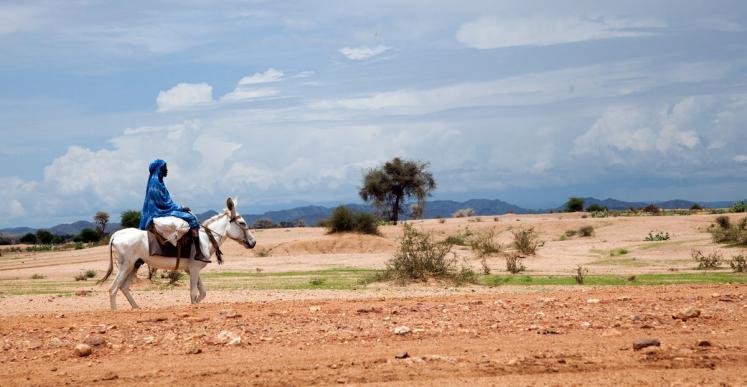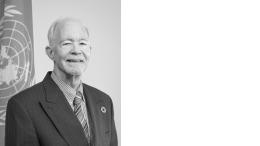In the 11 months that have gone by since world leaders signed off on a new universal development agenda, there has been increasingly intensive reflection by many actors – including governments, civil society, multilateral development banks, the private sector, and foundations – about their readiness to implement the 2030 Agenda for Sustainable Development.
When it comes to the question of whether the UN Development System (UNDS) is fit to respond to the challenges of the 2030 Agenda, renewal – if not more far-reaching change of the system itself – is in the air. Over the past 18 months inter-governmental discussions have been held in the Economic and Social Council (ECOSOC) around what the UN Development System’s future functions, funding, governance, organizational arrangements, capacity, impact, and partnership approaches should be in order to better align with the 2030 Agenda. The ECOSOC Dialogues have recently concluded and attention now turns to the next Quadrennial Comprehensive Policy Review (QCPR). An Independent Team of Advisors commissioned by the ECOSOC Bureau has come up with a number of proposals for change, while several Member States, think tanks, and the United Nations Development Group (UNDG) itself have also tabled their own specific proposals for reform.
It is in this context that earlier this year, we developed this paper for a proposed “theory of change” for reform of the UNDS, in order to ensure that ongoing discussions have a clear-eyed view as to what is now needed to drive change going forward.
Learning from past reform
In order to understand the way ahead for the UNDS, our paper first examines how change has occurred in the past. Looking at key past reforms, it is clear that often implicit assumptions about change have underpinned these efforts. And there are also key lessons that we can build on. Within the UNDS, reforms have often focused on the country level, as reforming UN Headquarters is considered a much harder task – the establishment of UN Women is the only real recent example of major structural reform, at least on the development side.
In the context of a universal, transformative, and very ambitious 2030 Agenda, however, the question is no longer whether country-level reform is sufficient or whether greater focus on systemic change is needed – clearly, we need both. And, while structural change is important, we also need to ensure that greater attention is given to what is often dubbed the “softer”, people-centered side of change. While preparing this paper, we heard time and again that there is a strong sense of urgency for change; that leadership, political will, and funding are seen as three key factors needed to drive reform, and that incentives – along with attitude and behavioral change – are just as important, if not more so, than structural change.
Indeed, UN reform is not merely a technocratic process, but is largely dependent on the political will and commitment of Member States and the UN system itself. So, if as some commentators have argued, the 2030 Agenda and the Sustainable Development Goals (SDGs) represent a potential “fourth shift” in the evolution of the UNDS, the question then becomes:
What more does the UN development system itself need to do to be ready for the SDGs, and how much of this is “policy amenable” to deliberate design by the UN Development System itself?
A theory of change to drive future reforms
Our paper tries to answer this question, by setting out a proposed “Theory of Change” for UNDS reform. The paper attempts to push the boundaries for change from within the UNDS. The case it makes for change – along with its analysis of existing theories of change and how to better design for change in complex systems – make it relevant for the current ongoing debate.
The tendency in some quarters is to rush to structural change – that is, form over function – without sufficient reflection around whether and why architectural changes are needed. This paper can also help inform an external audience of some of the UN Development Group’s (UNDG) ongoing thinking: a summary version was endorsed by the UNDG in February 2016 and is helping to inform the next set of UNDG strategic priorities, UNDG guidance and tools for UN Country Teams, as well as the second phase of the ECOSOC Dialogue.
As we know, to achieve effective, sustainable change, the process itself is at least as important, if not more so, than the final outcome. Hence, this paper was deliberately designed to be both exploratory and iterative – we consulted on an initial working draft through a series of focus group discussions with over 100 colleagues in the field and at UN headquarters.
If the SDGs are the “what” – the development results the UNDS will be contributing to – then the theory of change we present in this paper is very much about the “how”. It is primarily focused on the UNDS because of the significant role that the UN plays in global development. In light of the adoption of the SDGs and the 2030 Agenda, as well as the three peace and security reviews of 2015, the World Humanitarian Summit, and all of the thinking that is underway around integration across the different pillars of the UN, we felt that this was the right moment to broach such issues. And clearly the discussion still needs to go much further in terms of coherence and integration across the UN system as a whole.
Functioning as a coherent system
The main hypothesis of the paper is that for the UNDS to effectively support the SDGs, we need to better “function as a system” in an integrated and coherent manner, for greater relevance, strategic positioning, and impact. And as part of this, we have to figure out when it is most critical that we “function as a system” – and when it is not. While some options – for instance better clarification of division of labor between agencies – may offer ‘quick fixes’, it is only by recognizing what it has to offer as a system that the UNDS can best support implementation of the 2030 Agenda.
The paper argues that the UNDS is a complex system that is co-evolving and non-linear – and this means that different approaches to change are needed that are much more dynamic, flexible, and diversified. Creating space for, and fostering, experimentation and innovation is key in this regard, and we need much more of this in the UNDS and in support of the SDGs at all levels. The UNDS also needs to look at other sectors and systems and how they are working collectively in support of common values and objectives, as well as how they are measuring collective results and impact.
Against this backdrop, we have set out proposed elements for a “theory of change” towards better functioning as a system for relevance, strategic positioning, and results. The paper identifies key underlying factors, and suggested investments, measures, and approaches that would contribute to intermediate and higher-level outcomes towards better functioning as a system. Some of these are outlined below. It also discusses assumptions and risks, and presents implications and priorities going forward.
Some of the priorities the paper identifies include areas where the UNDS has probably underinvested, including in system-wide change management and internal communications. The UNDS is often too ready to codify and bureaucratize guidance and needs to instead open up much more space for experimentation, as was the case in the “Delivering as One” pilots. We should be moving away from a “command and control” and solely efficiency-focused approach to change to being much more values- and purpose-driven.
With regard to priorities, in addition to continuing to roll out “Delivering as One” and boosting investment in the UN Resident Coordinator system, the paper identifies several areas that need greater investment:
-
Much greater use of joint financing and pooled funding to help drive and support coherent responses;
-
Investing in and promoting transformative leadership as a key accelerator for driving change at all levels, as well as the capacities and mobility of staff;
-
Investing in strategic capacity – “thinking” for and about the UNDS “as a system”, as well as in a system-wide change management function;
-
Developing shared metrics for both development and coherence results;
-
Building the evidence for the contribution of collective efforts to development outcomes and impact; and
-
Greater support to innovation and experimentation at all levels in support of the 2030 Agenda.
What is abundantly clear is that a transformative 2030 Agenda requires a much more change-oriented international community – all development actors, including the UNDS, must really change to function in a much more integrated manner. Only then can we realize the promise of this ambitious new agenda – and truly leave no one behind.
John Hendra is Senior UN Coordinator, “Fit for Purpose” for the 2030 Agenda and Ingrid FitzGerald is former Special Adviser, “Fit for Purpose”.
Suggested citation: John Hendra, Ingrid FitzGerald., "Who Wants (To) Change? Making the UN Development System Fit To Support the 2030 Agenda," UNU-CPR (blog), 2016-08-02, https://unu.edu/cpr/blog-post/who-wants-change-making-un-development-system-fit-support-2030-agenda.



